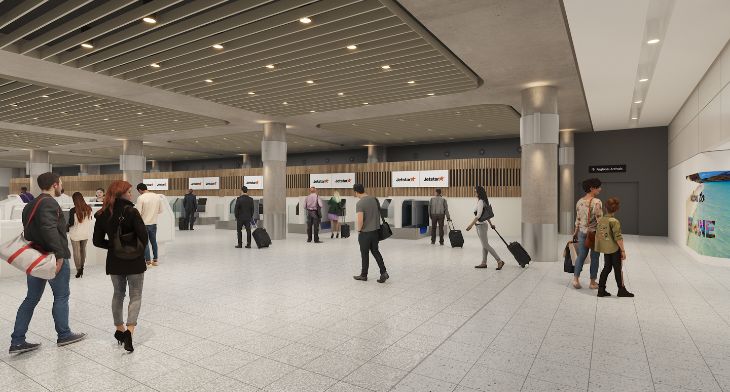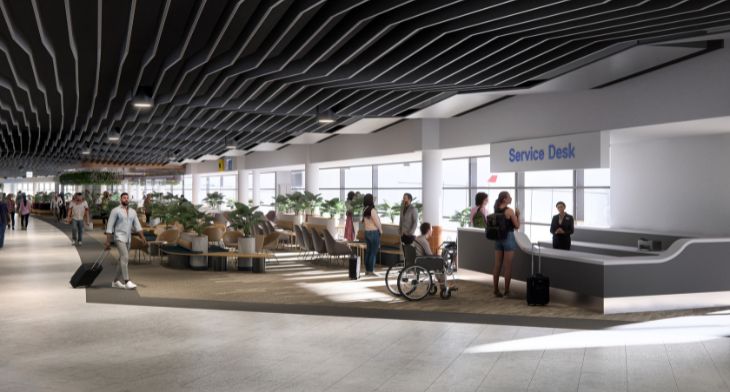


Marking the biggest transformation in its history, Brisbane Airport in Australia has embarked on a UAS$ 5 billion renovation project. Future BNE, as the scheme is being called, will comprise 150 projects to transform the Queensland hub. In addition to upgrades to the domestic and international terminal, the transformation will also see the expansion of aircraft parking and aprons, resurfacing of the legacy runway and the construction of a state-of-the-art Aeromedical facility to centralise medical repatriation and emergency services at Brisbane Airport.
“We’re investing now to get ahead of the population growth curve, so we’re ready for 2032 and beyond,” said Brisbane Airport Corporation CEO, Gert-Jan de Graaff. “We’re investing now so Queenslanders and the world are more closely connected. And we’re investing now to be a leader in sustainability.”
Work has commenced this week on the domestic terminal, which offers services to 61 destinations, half of which are located in Queensland. In addition to the replacement of the security screening systems, which will include Rapiscan’s Computed Tomography (CT) technology, a new mezzanine level is being built above the existing Central Terminal Area to cater for the size and weight of the new screening equipment. A new world-class baggage handling system (BHS) is also being installed, which will feature modern bag-tag readers and will operate sustainably, shutting segments of the system down and saving energy when there are no bags to process. Alstef and Brock Solutions have been contracted to build the new BHS.
Meanwhile, a new self check-in area will ensure a more seamless process for passengers of all domestic airlines, while bathroom refurbishments, expanded food and beverage areas and refreshed gate departure lounges will also enhance the passenger journey. The airport is also investing in charging stations for electric airside vehicles in line with plans to ensure that 70% of the airport’s fleet of airside vehicles will be electric by 2026. It is also expanding its domestic terminal P2 car park providing more options for pasengers with 1,700 additional car spaces as passengers increasingly choose to drive to the airport following the global pandemic.
“In the past year, 20 million passengers travelled through Brisbane Airport, and we expect that to grow by 10 million passengers in the coming decade as Queensland’s population expands and our terminals need to be ready,” continued Graaff.
He added that more than 20,000 people work at the air transport hub and this figure is forecast to grow to 30,000 by the time the flame is lit for the Opening Ceremony of the 2032 Olympic and Paralympic Games, which will be hosted by the city.
Describing this initial phase as the “just the start of Future BNE, Graaff added: “This major upgrade will ensure our Domestic Terminal continues to serve Brisbane, Queensland and Australia for many years to come. And while there will be some changes to the way you move through the terminal during construction, the end result will be a terminal we can all be proud of.”






